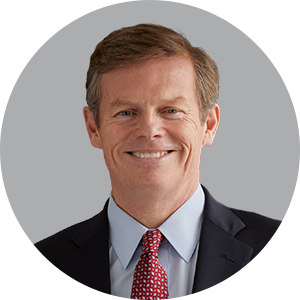Explore the outlook
-
A post-cycle economy faces greater policy uncertainty
Economy
-
Embracing the new, old normal
Fixed Income
-
Sturdier leadership extends the bull market
U.S. equities
-
Focusing on structural rather than cyclical stories
International equities
-
Stabilizing in a shifting world
Alternatives
-
Reports of my death are greatly exaggerated
Asset allocation

In the coming months, investors will look for greater clarity on the new administration’s agenda, which will help refine the economic outlook. Until then, the economy remains on stable footing as we enter the new year, with a gradual return to normal across many fronts.

An active approach to bond investing will be key to finding attractive relative value opportunities while balancing risks with higher rates.

The prospect of deregulation and corporate tax cuts may finally give investors conviction to add to previously unloved areas of the market, like value and mid/small cap stocks, which are also benefiting from earnings recovery and attractive valuations.

Looking ahead, international equities should benefit from multiple expansion and better earnings growth expectations.

Given rich public market valuations, lower bond yields and positive stock/bond correlation, investors should leverage alternatives to enhance portfolio return, income and diversification.

As macro forces continue to shift and a bevy of potential policy changes loom on the horizon, a well-diversified long-term portfolio will be that much more important.
2025 Year-Ahead Investment Outlook
Out of the Cyclical Storm and into the Policy Fog
Related content

Dr. David Kelly
Chief Global Strategist

Gabriela Santos
Global Market Strategist

Meera Pandit
Global Market Strategist

Jack Manley
Global Market Strategist

Jordan Jackson
Global Market Strategist

Stephanie Aliaga
Global Market Strategist

Dr. David Kelly
Chief Global Strategist

Gabriela Santos
Global Market Strategist

Meera Pandit
Global Market Strategist

Jack Manley
Global Market Strategist

Jordan Jackson
Global Market Strategist

Stephanie Aliaga
Global Market Strategist

Dr. David Kelly
Chief Global Strategist
Dr. David Kelly is the Chief Global Strategist and Head of the Global Market Insights Strategy Team for J.P. Morgan Asset Management.

Jordan Jackson
Global Market Strategist

Gabriela Santos
Global Market Strategist

Jack Manley
Global Market Strategist

Meera Pandit
Global Market Strategist

Dr. David Kelly
Chief Global Strategist

Jordan Jackson
Global Market Strategist

Gabriela Santos
Global Market Strategist

Jack Manley
Global Market Strategist

Meera Pandit
Global Market Strategist